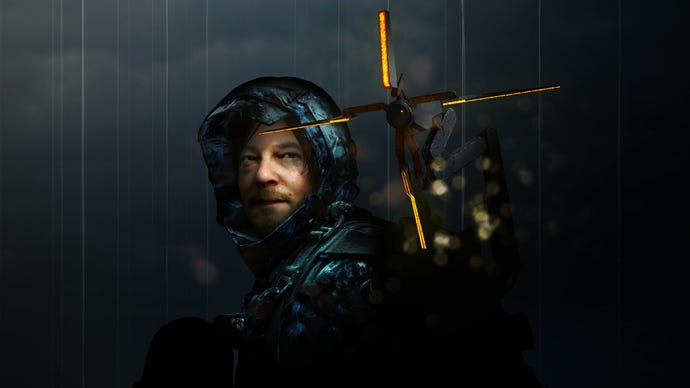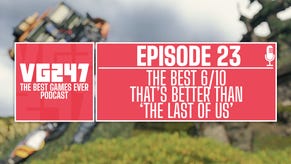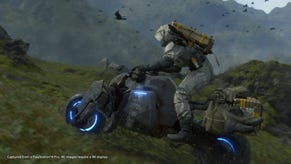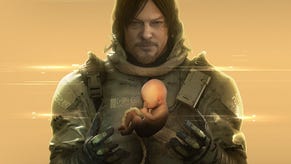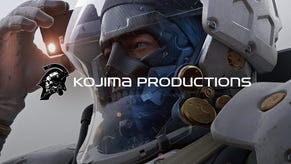Death Stranding Director’s Cut is Kojima’s most self-indulgent game yet
What does the new content add to Kojima's game about uniting society?
Death Stranding is a tale of juxtapositions. It’s a game where someone can monologue for 10 minutes straight about uniting a divided America, before Junji Ito pops in over a comm link to ask if you’ve seen his figurines. It’s a tall tale of uniting a divided society and what it means to maintain a connection in a world devoid of physicality, smashed against the cliff face of repeatedly gunning down Mads Mikkelsen and fighting ghosts using grenades made from your own p**s and s**t.
Death Stranding Director’s Cut is a game of even more juxtapositions. Not quite content to let its 2019 offerings lie, Kojima Productions is back for another round with Norman Reedus’ Sam Porter Bridges nearly two years later. The result is more polarizing additions: for every heartfelt moment of discovery among the new story content, there’s a racing minigame that borders on the obnoxious. For every critical mechanic that feeds into Death Stranding’s overarching philosophy, there’s a literal cannon that shoots out cargo for you to sprint ahead and reclaim. There’s plenty of smaller additions strewn throughout Death Stranding’s re-release, and they’re not necessarily concerned with meshing into what came before.
It’s impossible to examine the new content of Death Stranding Director’s Cut without first re-examining the aforementioned philosophy of the base game. In 2019, Death Stranding continued game director Hideo Kojima’s fascination with the cultural and social aspect of America. If the Metal Gear Solid series was representative of Kojima’s fixation with America’s looming shadow on the world stage, with politics and proxy wars alike spreading all over the globe, Death Stranding was a look inwards at the heart of America through societal norms, examining how people function in a disparate society after a culture of self-preservation and personal gain has been thrust upon them for the past 300 years.
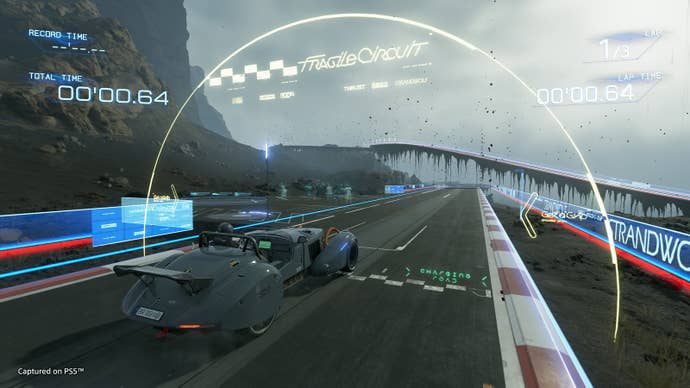
That, in a large sense, is Death Stranding’s core philosophy. It’s chiefly an assessment of how, if at all, people come together to help one another in the aftermath of a crisis, but uniquely positioned against the backdrop of America’s promise of personal achievements and individual freedom. Yes, this America is populated with ghosts that emerge out of the ground to drag people beyond the veil, and babies in jars that can sense said ghosts but get pretty p**sed off if you’re discovered by them, but its core foundation is built upon examining the simple interactions between people when the world they knew is all but gone.
Death Stranding’s shared world was emblematic of this examination. My Norman Reedus might share a world with your Norman Reedus, and although we can’t see each other’s Norman Reedus’s if we’re both standing in the same spot at the same time, we can still interact with each other through very specific means. I might lay the foundations for a highway, for example, which invites all the other Norman Reedus’s in this one shared world to come together and donate their precious resources to help construct a road that will inevitably benefit all who travel through said region of Death Stranding.
There’s also shared tools that can be utilized by every player in the shared world. If one Porter pops down a climbing anchor atop a cliff face and descends to the bottom, that climbing anchor is left as a departing gift to other players when the first player walks away from it, intentionally leaving it behind so others may use it and benefit from the precious gear that first player sacrificed. Death Stranding offers up these opportunities for players to help out one another as they journey through a ravaged America, providing countless outlets of relief for others if the player chooses to help towards a greater cause of reuniting America.
Every aspect of Death Stranding is engineered to feed into this philosophy of an overarching struggle between players in a land that’s out to kill you. Every step you take is calculated against the terrain you’re walking on and the weight of the packages you’re hauling between point A and B. Every piece of equipment you fabricate and leave behind for others to use is a victory against the collective mountain that every player on that server is attempting to summit. There’s no physical reward for defeating that mountain, but Death Stranding lectures players in this before asking them to engage in the collective struggle to help players they’ll never see, acknowledging that the closest to a “reward” anyone will ever get is the satisfaction that comes from having your shared gear or donation to a project ‘Liked’ by others.
The new content featured in Death Stranding Director’s Cut doesn’t affect this balance, because it doesn’t directly factor into the aforementioned systems. The Fragile Circuit features Lea Seydoux opening several brand new racetracks for the player to speed cars and vans around, beating out others for the best time possible. This isn’t meant to directly impact the overarching narrative of Death Stranding on any grand scale, but instead provide a little lighthearted distraction for the player in between hauling cargo and legging it from ghosts. It’s all good fun, truth be told, and doesn’t impact the overarching seriousness of Death Stranding’s more morbid moments because it never comes close to infringing on said territory.
Alternatively, even something like the Buddy Bot, a robotic porter that delivers cargo for you, still doesn’t affect the balance. The Buddy Bot can be programmed to either follow the player, or sprint ahead to a designated delivery point, worming its way through the cliffs and hills of America as it goes. Even though the Buddy Bot directly factors into how you deliver cargo, and the minute-to-minute gameplay of Death Stranding, it crucially doesn’t let you actually opt out of the busywork of delivering cargo itself. Buddy Bot is simply meant to be a buddy, exactly what it says on the tin, something that aids the player, just like how the Cargo Catapult can temporarily relieve you of a burden, but you’re still going to have to pick it up where it’s landed a couple hundred meters away from you and physically deliver the goods yourself.
The new Director’s Cut re-release of Death Stranding isn’t Hideo Kojima reflecting back on the foundations of the game he’s helped build over the past four years, but rather seeing which ingredients he can get away with throwing into the melting pot without upsetting what came before. There’s no doubt some that’ll roll their eyes at such additions like the racing minigame, and when you remember this game is coming from the architect of a series that featured a running joke of a man violently shitting himself, and a woman that wore next to no clothing because she breathed through her skin, you’d have every right to chalk it up to Kojima’s weirder sense of humour.
Death Stranding Director’s Cut does deserve to be judged on its own merits, yes, but it also begs analysing in the context of who spearheaded the creation of this game. The re-release of Death Stranding is an indulgence from Hideo Kojima, an exercise in what a creative can reasonably get away with when they’ve already got a solid foundation with which to work with and a dedicated audience that’ll return no matter the product. If Death Stranding was the rockbed on which America’s societal identity was challenged in the context of disparate players helping one another, juxtaposed against Nicolas Winding Refn dropping dead every 20 minutes and a 1980s version of Lindsay Wagner excruciatingly referencing Super Mario, the Director’s Cut is a gleeful second helping, dripping in self-indulgence from one of the most recognisable game creators on the planet.
Disclaimer: Tested on PS5, with a copy of the game provided by the publisher.
